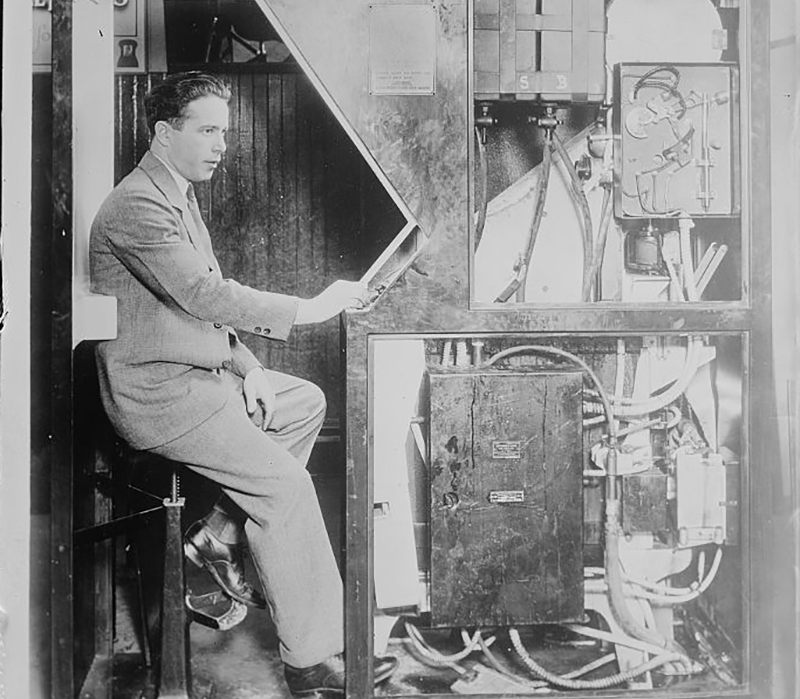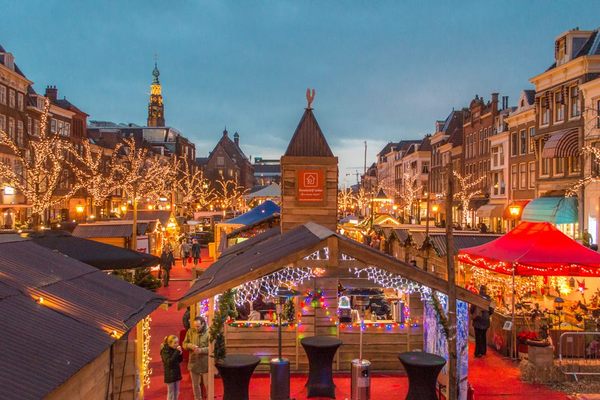When ‘Broadway’s Greatest Quarter-Snatcher’ Was a Photo Booth
The year was 1925.

A version of this post originally appeared on Tedium, a twice-weekly newsletter that hunts for the end of the long tail.
From the beginning, photography has entranced inventors, artists, and entrepreneurs with fabulous possibilities, with companies as varied as Kodak, Fotomat, and Facebook seeking their fortunes via photographs.
But long before Instagram, the first true turning point of modern photography was the photo booth, with one of the earliest fully-functioning versions premiering in Hamburg, Germany at the First International Exposition of Amateur Photography in 1890. Known as the Bosco Automat, it took 3 minutes to develop a ferrotype.

The first attempts, though, had similar problems: they produced photographs on tin that quickly faded, among other issues, in addition to requiring a team of humans to actually operate them. And while they were ostensibly coin-operated, this too was a bit of a ruse.
The machines “are stand-alone arrangements that consist of a photography column and a chair for ‘poseying the subject’,” Rolf F. Nohr, a professor at the Braunschweig University of Art in Germany, wrote in the 2013 book (Dis)Orienting Media and Narrative Mazes. “However, almost all of these early techniques are just ‘semi-automatic’ techniques that require a ‘machinist’ that takes care of the coin-automatism, carries out the regulation of chemistry, explains the function of the machine to the customer, or just takes reorders.”

Enter, a few decades later, a Serbian immigrant named Anatol Josepho, whose Photomaton, in 1925, exploded in popularity, ushering in an era where trips to carnivals and boardwalks were incomplete without a small strip of grainy black and white photographs. It also made Josepho a millionaire.
In the beginning, it wasn’t easy, though. The Photomaton took years to create, as Josepho tinkered with chemical formulas in hopes of finding a faster-developing process while maintaining picture quality. After running a successful photography studio in Shanghai, Josepho decided to relocate to America to secure financial backers to build his machine. He later raised $11,000 (approximately $150,000 these days), building the first Photomaton in midtown Manhattan and opening for business in 1925. Lines quickly wrapped around the block, with as many as 7,500 people a day paying a quarter for a strip of eight photographs (that’s $1,875 a day in 1925 or more than $25,000 in 2017 dollars.) The Photomaton became known as “Broadway’s Greatest Quarter-Snatcher”; Josepho, meanwhile, started dating a silent film actress.

In March 1927, The New York Times ran the headline, “Slot Photo Device Brings $1,000,000 to Young Inventor,” on their front page. An investment group led by Henry Morgenthau, a former ambassador to Turkey and founder of the American Red Cross, had offered Josepho a buyout and royalties for his patent. He accepted. The next year, he sold the European rights.
“I don’t remember the things that started me on the invention,” Josepho told the Times in 1927. “The idea gradually grew on me that it would be a great thing commercially to invent a coin-in-the-slot machine which would automatically photograph the sitter, develop the photographs, dry them and deliver them.”
Josepho, who died in 1980, later added, “I shall certainly dedicate much of my life and this newly acquired wealth to helping my brother inventors achieve the same success.”
Josepho lived long enough to see photo booths become ubiquitous, making one’s portrait pretty easy to come by and speeding the way toward the age of the selfie. But in the very early days self-portraits were still a pretty novel commodity, even as people were already finding new uses for them.
“Unexpectedly, the photographing booth at the Woodlawn country fair … has become a detective agency,” The Inter Ocean, a Chicago newspaper, reported in 1902. “A picture taken of George Wiseman, former clerk at the Colonial Hotel, is expected to lead to the fugitive’s arrest.”
Andrew Egan is writer and editor of Crimes In Progress. His work has appeared in Forbes, ABC News, Tedium, and more. His novel, Nothing Too Original, is available now for Kindle and paperback.
A version of this post originally appeared on Tedium, a twice-weekly newsletter that hunts for the end of the long tail.

















Follow us on Twitter to get the latest on the world's hidden wonders.
Like us on Facebook to get the latest on the world's hidden wonders.
Follow us on Twitter Like us on Facebook